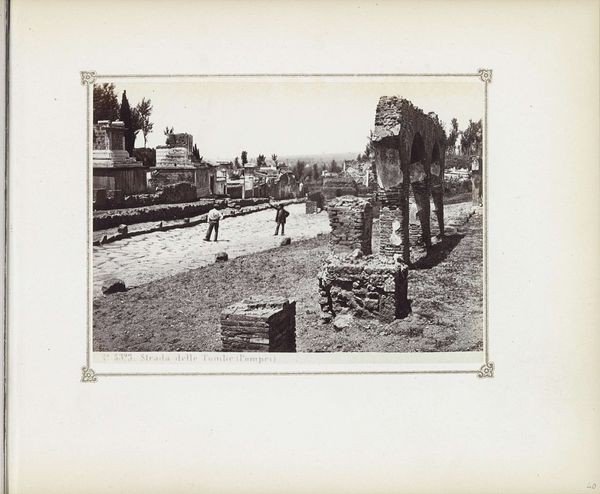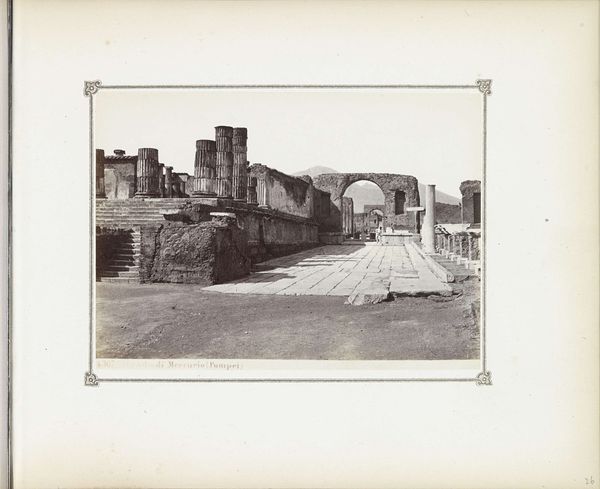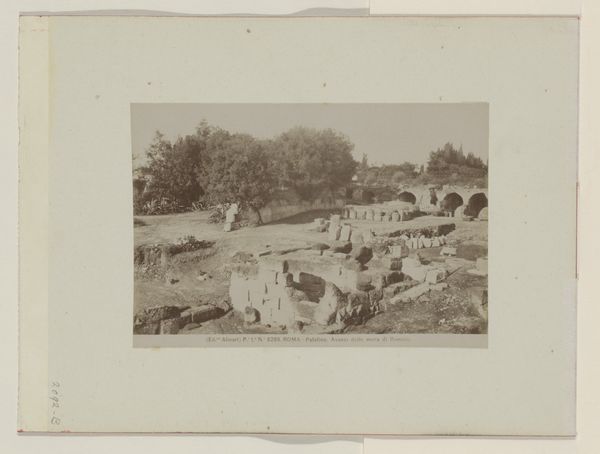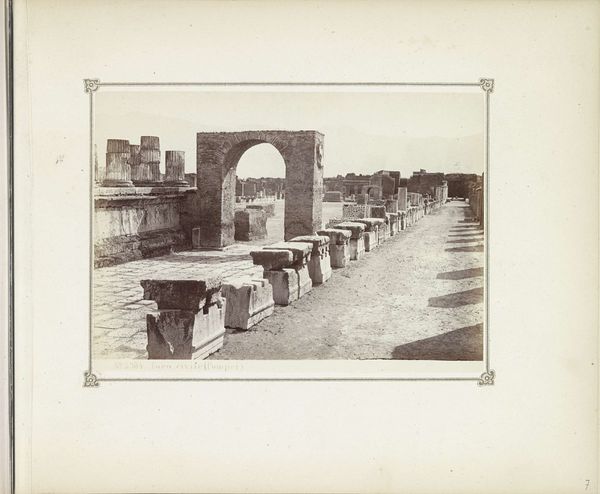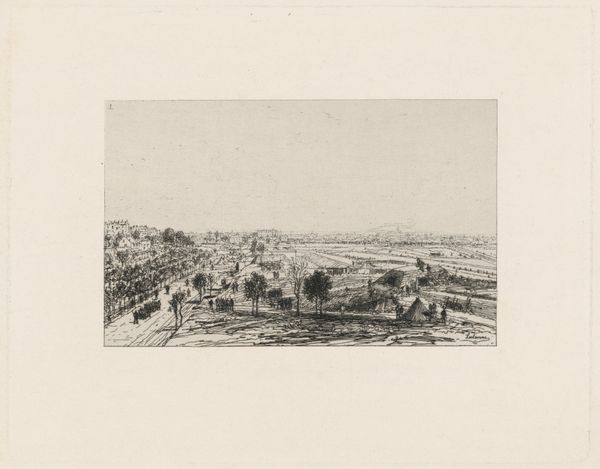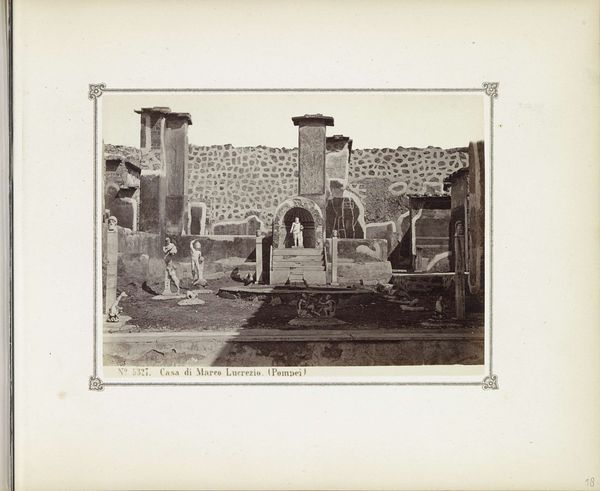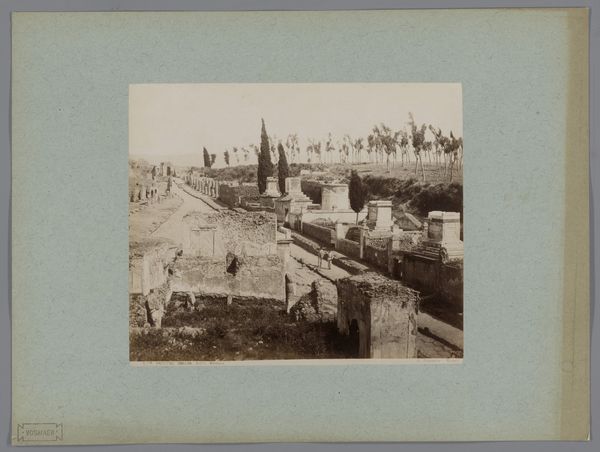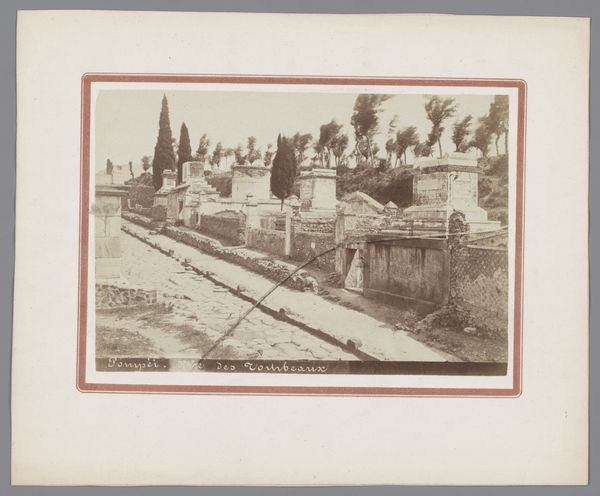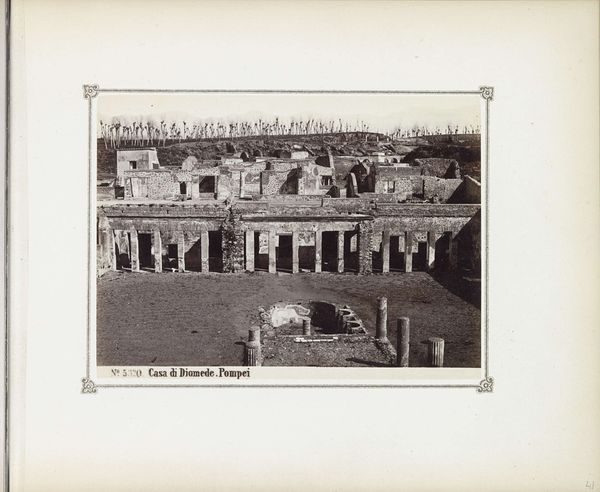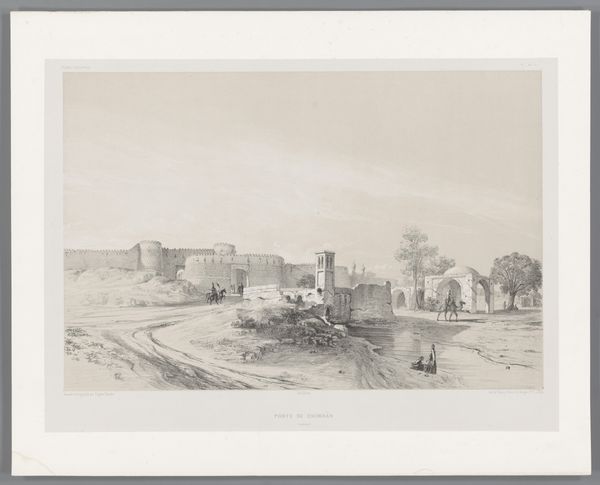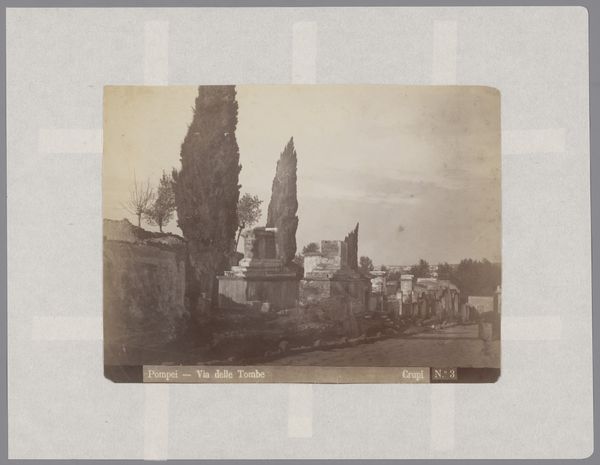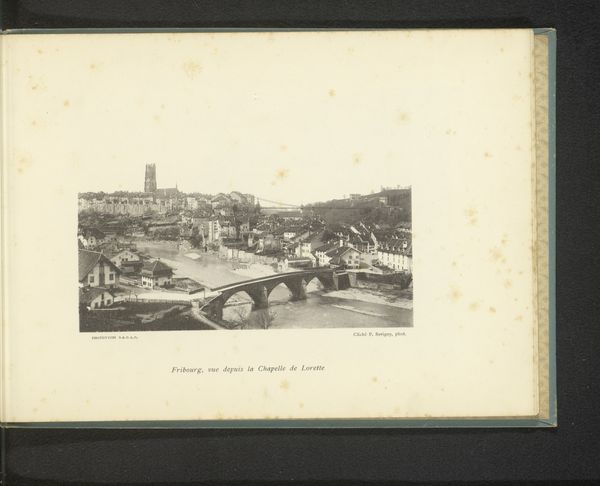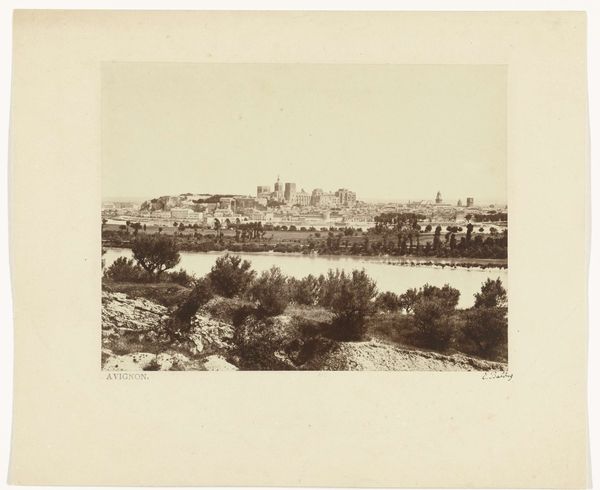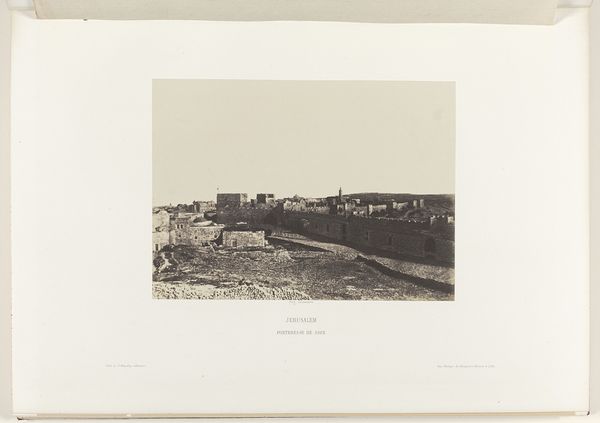
photography, gelatin-silver-print
#
landscape
#
photography
#
ancient-mediterranean
#
gelatin-silver-print
#
street
Dimensions: height 105 mm, width 140 mm
Copyright: Rijks Museum: Open Domain
Editor: This gelatin-silver print, taken sometime between 1860 and 1900 by Giorgio Sommer, is called "Street with Remains of Tombs in Pompeii". It's quite striking. The contrast between the ruins and the implied bustling life of the original city creates a sense of loss. What strikes you most about this photograph? Curator: The photograph operates on a fascinating level beyond just documentation. It captures a specific moment in the archaeological project of Pompeii, where the past was being unearthed and presented to a modern audience, largely framed as picturesque. How does the act of photographing these ruins change our perception of Pompeii's history? Editor: That's a great point! It’s like the photographer is acting as a historian themselves, shaping how future generations view the city. Did Sommer, as a photographer, play any part in fueling the growing interest in Pompeii at that time? Curator: Absolutely! Images like these, widely circulated, influenced how the public understood not just Pompeii, but antiquity in general. These were luxury items for European tourists. They helped popularize Pompeii, solidifying its status as a site of collective memory, of art and preservation. The photograph becomes more than just a recording; it participates in a cultural and economic exchange. Editor: So, in a way, Sommer isn’t just showing us the past; he's actively building a narrative around it for his contemporaries? Curator: Precisely. By choosing this perspective, this angle, these specific remnants, he's participating in the continuous reinterpretation of history, driven by market demand and personal aesthetic preferences. Editor: I never considered the photograph itself could be part of Pompeii's story. I'll definitely remember that next time. Curator: It's these layers of context that make art history so compelling!
Comments
No comments
Be the first to comment and join the conversation on the ultimate creative platform.
